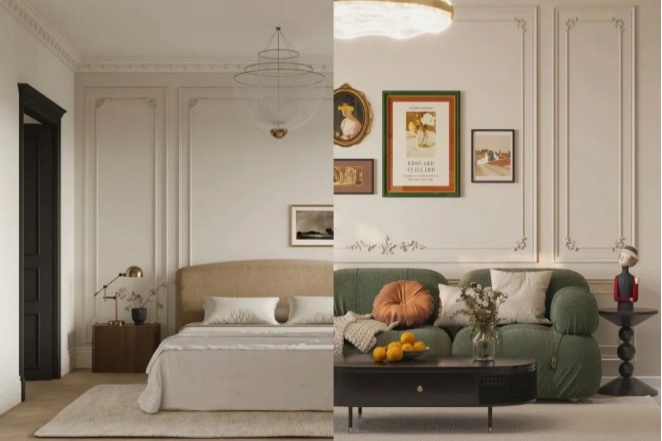
What is New French Style?
French Style, also known as the traditional style of architecture, interior decoration, soft furnishings, and furniture that embody the culture of France. It includes designs that express Baroque, Rococo, and Neoclassical styles, which are unique to France. Compared to the traditional, ostentatious European style and the stately, mature American style, French Style has a touch of understated romance and gentleness.


New French Style can be understood as modern or light French Style. It inherits the elements and culture of traditional French Style while meeting the minimalist mentality and pursuit of “less is more” of modern people. It can also blend with popular modern, minimalist, wabi-sabi, and other styles.

The keywords of New French Style are romance, understated elegance, gentleness, nobility, and delicacy, and it is now popular among young people mainly because of its high aesthetics.
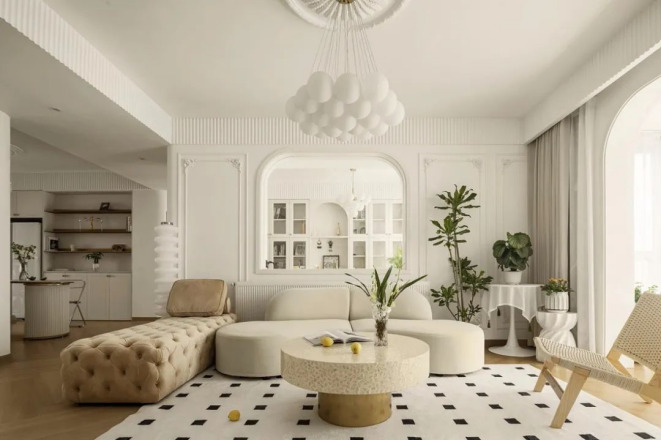
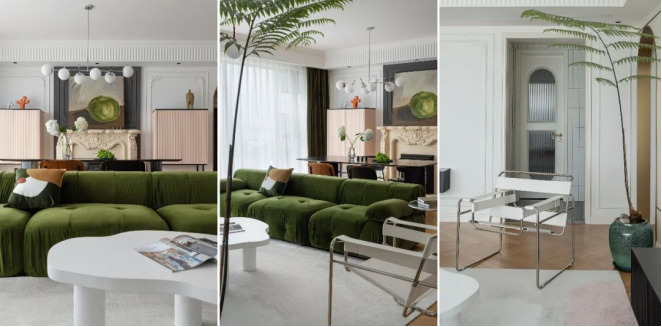
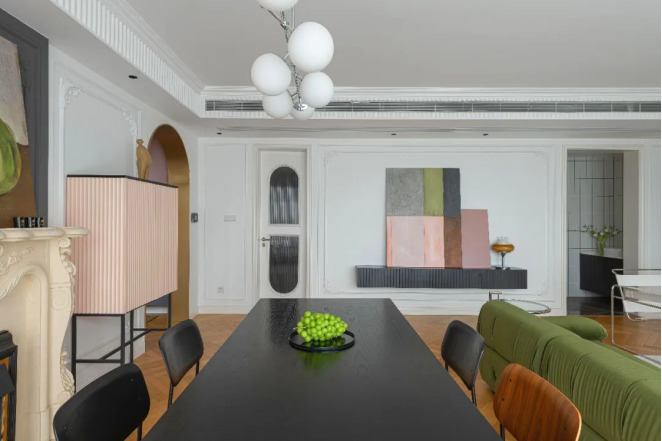
Distinctive features of New French Style
A. Strong Romantic Flair
The French are advocates of romanticism, so in terms of style, whether it is the soft lines, exquisite carvings, or overall space ambiance, New French Style emphasizes nobility, romance, and exquisite elegance.


B. Axial Symmetry
The layout and structure emphasize axial symmetry, which enhances the grandeur and luxury of space.


C. French Court Elements
French court elements such as colonnades, corner lines, and carvings are used in fine construction details, with high requirements for craftsmanship. These elements are not only reflected in interior decoration but also in architectural style.


Origin of French Style
French Style originated in Italy in the 16th century and became the mainstream design style in France in the 17th century when the romantic spirit of the Renaissance was introduced from Italy. The evolution of furniture style is closely related to the development of French Style.
Initially, French Style was not as we know it today. It went through three stages of development:
A. Louis XIV period – Baroque style
During this period, furniture tended to be masculine, symbolizing authority, imperial power, and supremacy. The furniture style was grand, massive, and exaggerated, but also elegant, using straight and curved lines. Carvings of lion heads, claws, weapons, and other masculine symbols were prominent.
B. Louis XV period – Rococo style
By this time, French noble art had reached its peak and was dominated by the feminine Rococo style. The overall decoration was delicate, elegant, and graceful, with a thin and tender charm, emphasizing comfort. Furniture became smaller, lighter, and more flexible in design with a large number of curves.
C. Louis XVI period – Neoclassical style
During this period, the rise of ancient countries such as Greece and Rome gave birth to classical art, which became the mainstream. Furniture design became more mature, with a basic framework of straight and geometric lines. There was no longer an excessive pursuit of intricate and elaborate decorations on details, and more emphasis was placed on overall symmetry and proportion. Legs often used parallel, concave grooves, or semi-circular arcs, emphasizing rationality and restraint.
Experiencing three stages, the framework and prototype of new French style gradually formed.
Key points of new French style design
A. Retaining high ceiling height
Influenced by Gothic architecture, such as Notre-Dame de Paris, Cologne Cathedral, etc., which are typical Gothic architecture, their common feature is that the spires are towering, using slender columns, pointed arches, and creating a soaring feeling of flying up.

Therefore, French style inherits this high ceiling height and upward space, and at the same time, the wall and ceiling have rich textured carved lines to create the unique charm of French style, enriching the interface design of the wall and ceiling.
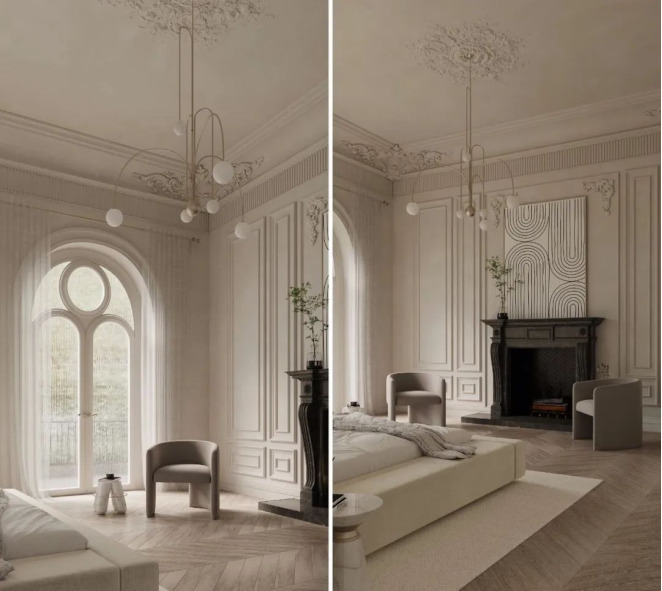
B. Fireplace selection
As a necessary element in traditional European and American styles, the French style is no exception. Traditional French fireplaces were used for heating and insulation.
Today, the fireplaces used in the new French style are all fake fireplaces, which have a decorative and beautiful effect. Common types of such stone-carved line-carved fireplaces or modern simulated fireplaces can all enhance the high-end appearance of the space.


C. Retaining door and window height
Also influenced by traditional Gothic architecture, it creates a soaring feeling of flying up. The setting of doors and windows is no exception, usually using the method of setting the lintel high and the door and window holes high.
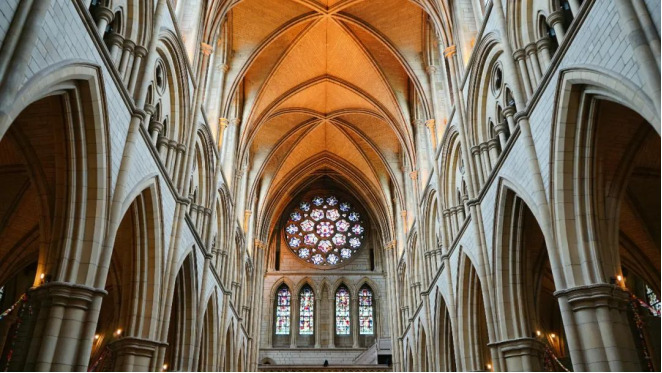
However, because the floor height of many homes is limited, designers can use different design methods and techniques to increase the proportion of visual height of doors and windows to raise them.

Such as the form of wooden doors and bright doors, or the setting of cap lines on doors, as well as arches and pointed arches that can all increase the proportion of door and window height.


D. Parquet flooring
Parquet flooring is the standard configuration for the high end new French style. Common types include herringbone, fishbone, and other various parquet forms, plus the natural warmth of the original wood of the floor, enhancing the romantic, warm, and comfortable feeling of French style.
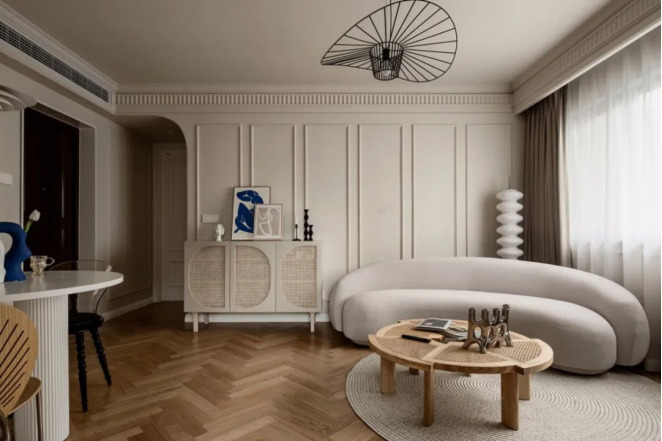

E. Carved lines
Carved lines are also an essential element of French style. Traditional Baroque and Rococo, whether on the wall or ceiling, emphasize the presentation of complexity in carved lines. While the new French style simplifies the carved lines on the wall, weakens the complex lines and carvings, and uses some straight or curved lines to coordinate the proportion of the interface. On the ceiling, some complex carvings are appropriately used to create the charm and atmosphere of French style.



F. Ambient lighting
Lighting is the most direct way to create a sense of space atmosphere. Combining the popular design of non-main lighting, the use of spotlights, tube lights, light strips, floor lamps, and some lamps with French charm, such as candlestick lamps and crystal lamps, are the most typical.

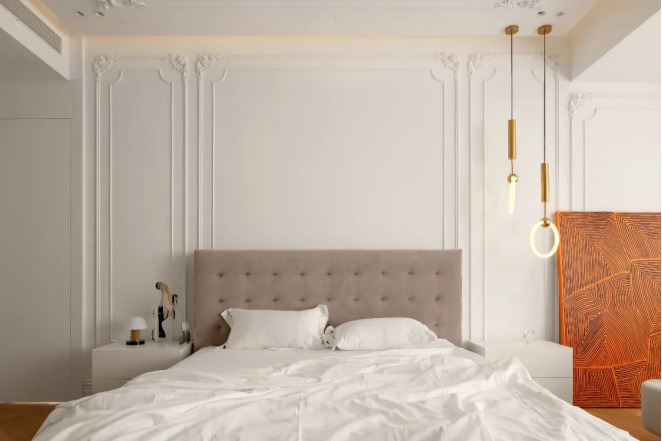
G. Color style
Traditional French style has a strong color matching, but it is not chaotic. The new French style is influenced by modern minimalism and Wabi-sabi style, and appears elegant, low-key, and exquisite.
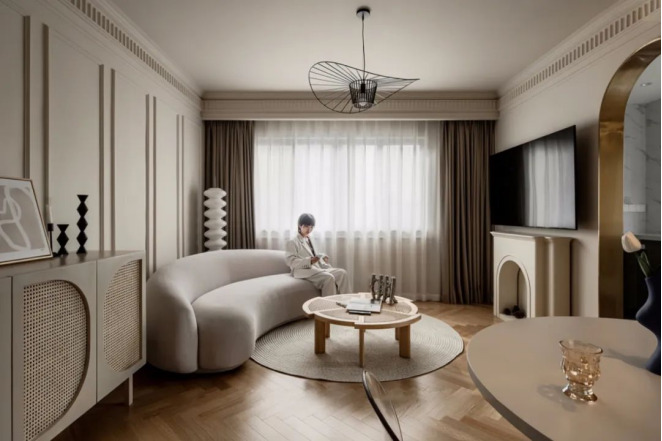

The overall tone is based on clean and elegant pearl white or light colors with low saturation, adding soft contrasting colors or intermediate colors to balance the thickness of traditional French style color matching and integrate with the attitude of modern life.
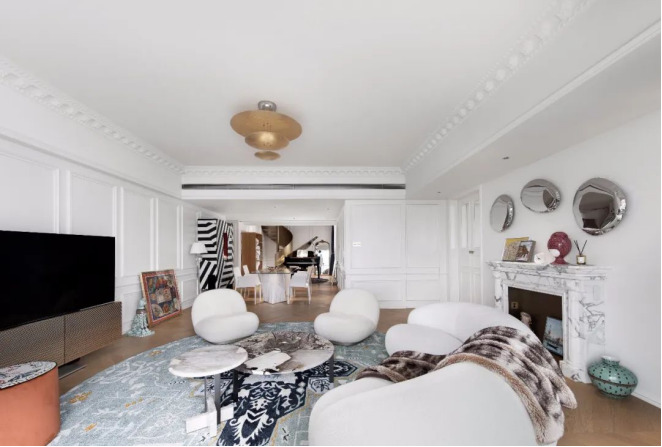
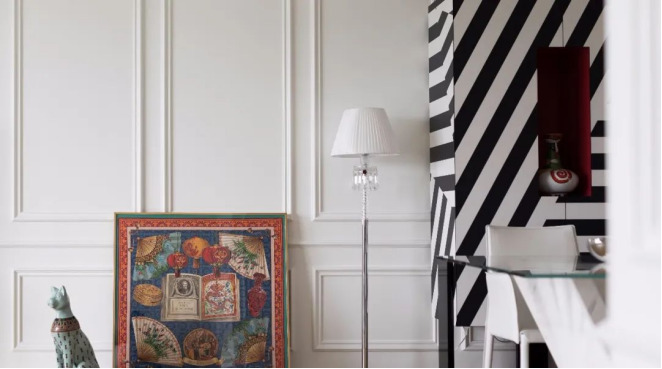
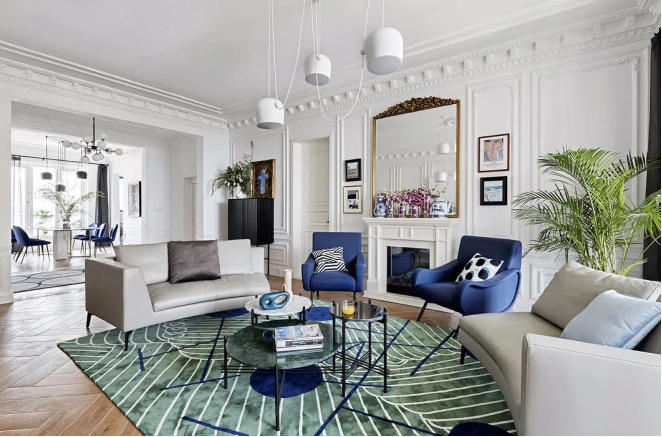
Some new French styles that tend to be retro will also use low-saturation green or antique red as accents to the space.




H. Material Elements
Influenced by the light luxury style, the new French style has also incorporated many modern and new materials, such as reeded glass, brass metal, plush elements, glass bricks, etc., adding icing on the cake to its appearance.
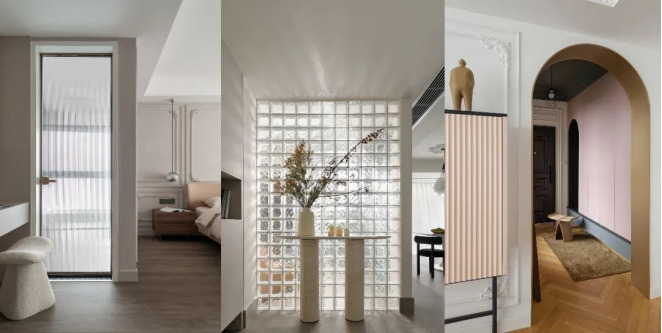
About Us
At 1ST Missing Piece, we specialise in offering unique, playful, and innovative furniture online. With a focus on artisan-crafted pieces from around the globe, our mission is to transform furniture shopping into an adventurous journey of discovery. Our extensive catalogue features a diverse selection of standout furniture pieces that add comfort, delight and style to any home or workspace. Beyond functionality, our handpicked furniture collection makes a bold statement, offering lasting impressions and superior quality that sets us apart in the competitive online furniture market.
